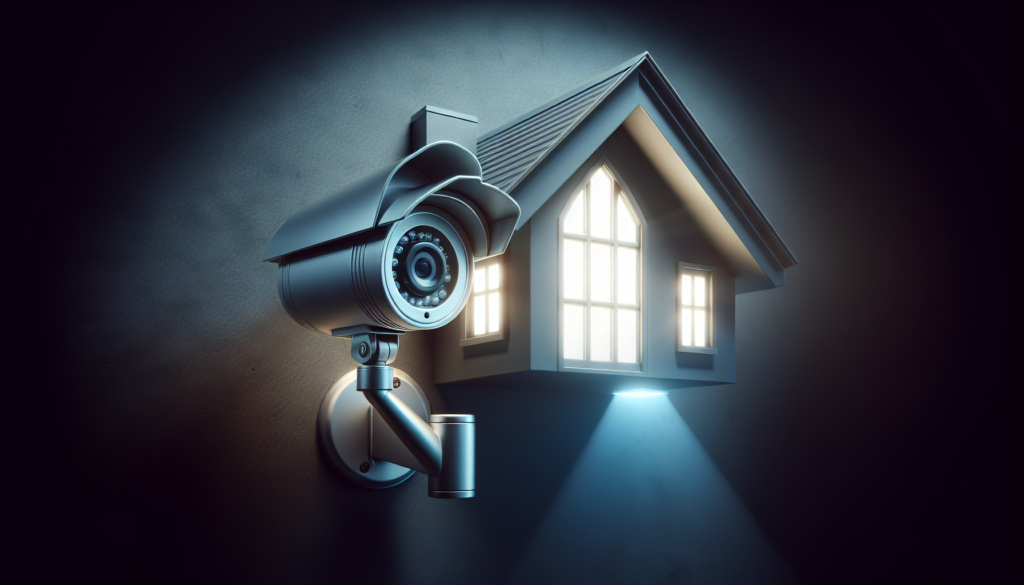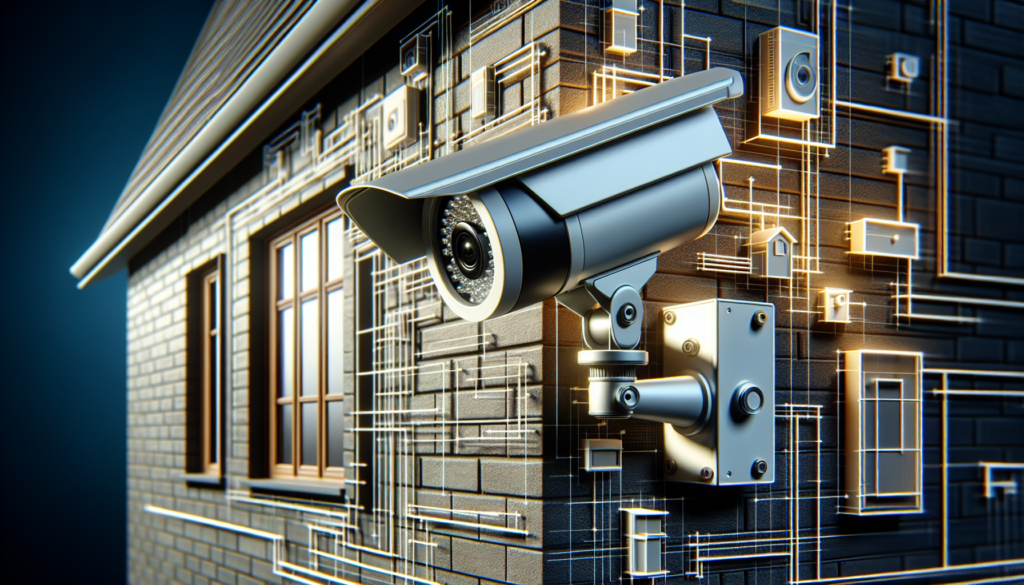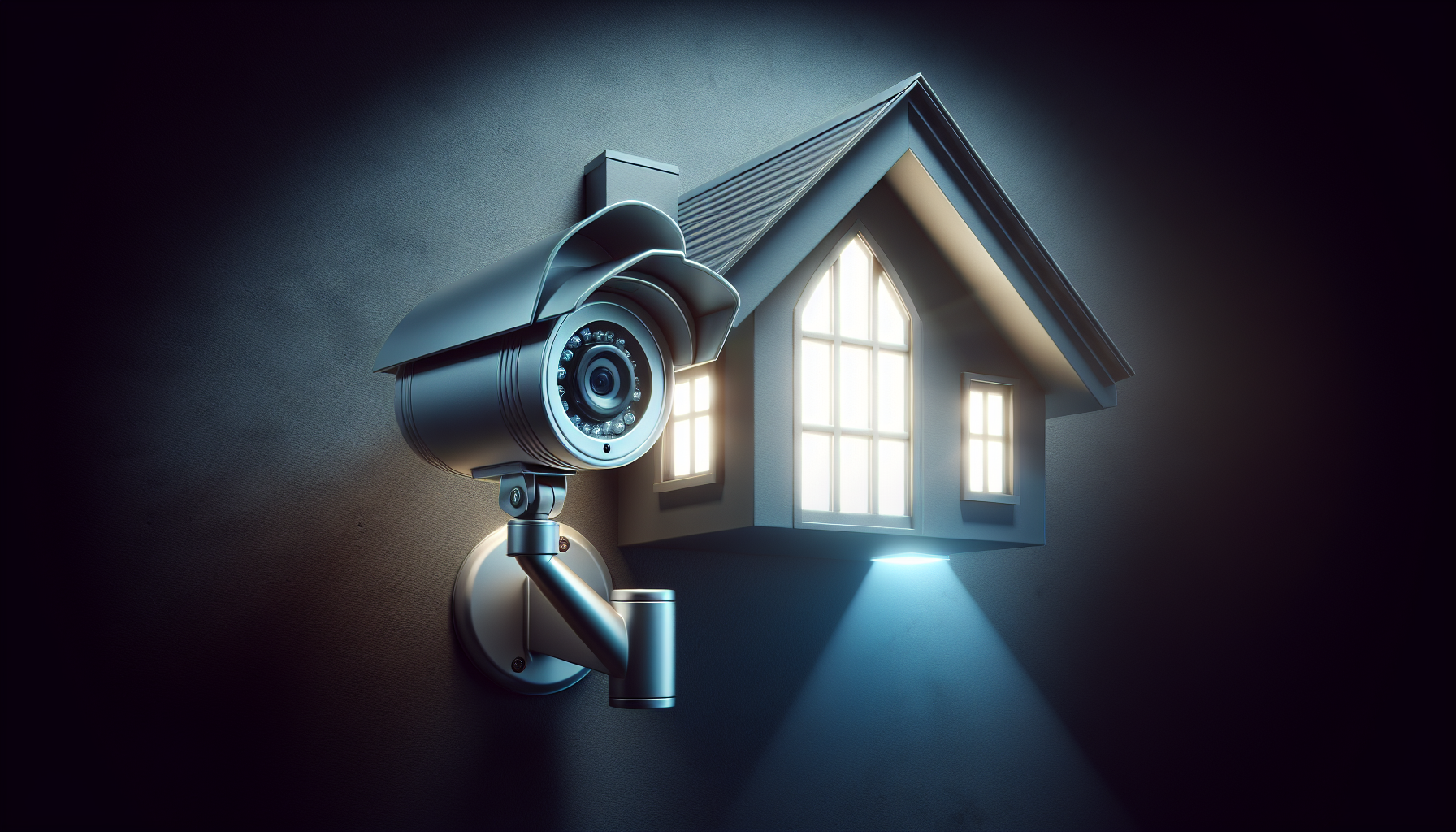Whether you live in a bustling city or a quiet suburban neighborhood, ensuring the safety and security of your home is of utmost importance. With advancements in technology, surveillance cameras have become an increasingly popular choice for homeowners looking to take their home security to the next level. In this article, we will explore the various ways in which installing surveillance cameras can maximize the protection of your home, providing you with peace of mind and a sense of security like never before.
Choosing the Right Surveillance Camera System
Home security is a top priority for many homeowners, and surveillance cameras are a crucial component of any comprehensive security system. With a wide range of camera systems available on the market, choosing the right one can be a daunting task. To make an informed decision, it is important to first determine your security needs.
Determine your security needs
Before investing in a surveillance camera system, it’s important to assess your specific security needs. Consider factors such as the size of your property, the level of protection required, and any specific areas of concern. Is your main objective to deter potential intruders, monitor the exterior of your property, or keep an eye on specific areas inside your home? By identifying your priorities, you can focus on camera systems that meet your unique requirements.
Consider the camera types
Surveillance cameras come in different types, each with its own advantages and limitations. The most common types include bullet cameras, dome cameras, and PTZ (pan-tilt-zoom) cameras. Bullet cameras are small and discreet and are commonly used for outdoor monitoring. Dome cameras, on the other hand, are often installed indoors and have a 360-degree coverage. PTZ cameras offer the ability to pan, tilt, and zoom, allowing for greater control over camera movement. Consider the pros and cons of each camera type before making a decision.
Evaluate camera features
Once you’ve determined the camera type, evaluate the specific features that are important to you. Features such as night vision capabilities, high-resolution video quality, and wide-angle lenses are worth considering. Additionally, some cameras offer motion detection technology, which can trigger recording and alerts when movement is detected. Look for cameras that have the features that align with your security needs and preferences.
Placement and Installation
The effectiveness of a surveillance camera system depends heavily on its placement and proper installation. To optimize coverage and maximize security, it is important to carefully select camera locations and ensure they are installed correctly.
Identify vulnerable areas
Start by identifying the vulnerable areas around your property. These are the areas that are most likely to be targeted by potential intruders, such as entry points, windows, and blind spots. By identifying these areas, you can prioritize camera placement and ensure maximum coverage where it is needed the most.
Choose optimal camera locations
Once you’ve identified the vulnerable areas, consider the optimal locations for your surveillance cameras. This may include positioning cameras at entry points, along pathways, and near valuable assets. The goal is to capture clear and comprehensive footage of any potential threats. Additionally, consider the height and angle at which the cameras should be mounted to achieve optimal coverage.
Consider camera visibility
Another important factor to consider is the visibility of the cameras. Visible cameras can act as a deterrent, discouraging potential intruders. However, if you want to monitor discreetly, you may opt for hidden or inconspicuous cameras. Strike a balance between visibility and discretion based on your specific security needs and preferences.

Optimizing Camera Performance
To ensure that your surveillance cameras perform at their best, it is important to optimize their settings and regularly maintain them.
Adjust camera angles and focus
Once your cameras are installed, take the time to adjust their angles and focus to ensure that they are capturing the desired areas. Make sure that important features, such as doorways or windows, are clearly visible in the camera frame. Regularly review the camera footage to ensure that the cameras are capturing the desired areas effectively.
Ensure adequate lighting conditions
Lighting conditions can greatly impact the quality of surveillance footage. To optimize camera performance, ensure that there is adequate lighting in the areas you want to monitor. Consider installing motion-activated lights or infrared illuminators to enhance visibility in low-light conditions. Regularly check and adjust lighting conditions to ensure clear and detailed footage at all times.
Regularly clean and maintain cameras
Proper maintenance is essential to keep surveillance cameras functioning optimally. Regularly clean the camera lenses to remove dirt, dust, and debris that can obstruct the view. Check for any signs of damage or wear and tear, and replace any faulty parts as needed. Keep camera cables secure and protected to prevent damage and ensure a reliable connection.
Selecting Recording and Storage Options
Recording and storing surveillance footage is a critical aspect of any surveillance camera system. There are different recording methods and storage options to consider based on your specific needs and preferences.
Explore different recording methods
There are several recording methods available for surveillance cameras. These include continuous recording, scheduled recording, and motion-triggered recording. Continuous recording records footage 24/7, ensuring that no events go unnoticed. Scheduled recording allows you to set specific times for recording, conserving storage space. Motion-triggered recording only captures footage when motion is detected, saving both storage space and time during review.
Choose between cloud storage and local storage
When it comes to storing surveillance footage, you have the option to choose between cloud storage and local storage. Cloud storage offers the advantage of offsite storage, ensuring that your footage is secure even in the event of a physical theft or damage to the camera system. Local storage, on the other hand, provides immediate access to footage and eliminates the need to rely on an internet connection. Consider the pros and cons of each option to determine which is best suited for your needs.
Consider backup solutions
To ensure the safety and accessibility of your surveillance footage, it is important to have backup solutions in place. This can involve regularly backing up footage to an external hard drive or setting up redundant storage systems. By implementing backup solutions, you can protect your footage in case of data loss or system failures.

Enhancing Surveillance Camera Features
To further enhance the effectiveness of your surveillance camera system, there are additional features that can be utilized.
Utilize motion detection technology
Motion detection technology can play a vital role in minimizing false alerts and capturing important events. By setting up motion detection zones, you can specify areas that should trigger recording and alerts when motion is detected. This helps prioritize important events and reduces the amount of irrelevant footage that needs to be reviewed.
Integrate cameras with security systems
Integrating your surveillance cameras with your existing security systems can provide an added layer of protection. By connecting cameras to an alarm system, you can receive immediate alerts when suspicious activity is detected. This allows for quick response and can potentially prevent break-ins or other security incidents.
Consider remote monitoring capabilities
Remote monitoring allows you to access your surveillance cameras from anywhere, using a computer or mobile device. This provides the flexibility to monitor your property in real-time, even when you’re away. Remote monitoring is especially useful for homeowners who frequently travel or want to keep an eye on their property while at work.
Implementing Additional Security Measures
Surveillance cameras are not the only solution for home security. Implementing additional security measures can further enhance the effectiveness of your overall security system.
Install security signs and stickers
Visible security signs and stickers can act as a powerful deterrent. Display signs indicating that your property is under surveillance and protected by a security system. This can discourage potential intruders and make your property less attractive as a target.
Use dummy cameras as a deterrent
In addition to real surveillance cameras, you may also consider using dummy cameras as a cost-effective deterrent. Dummy cameras are designed to resemble real cameras, and when strategically placed, can create the illusion of comprehensive surveillance coverage. However, keep in mind that dummy cameras should not be relied upon as the sole security measure.
Consider alarm systems and motion sensors
Alarm systems and motion sensors can be integrated into your overall security system to provide an added layer of protection. These systems can detect unauthorized entry and trigger loud alarms or alerts. When combined with surveillance cameras, alarm systems and motion sensors create a comprehensive and effective security solution.
Securing Camera Footage
The security of your surveillance footage is of utmost importance. To prevent unauthorized access and protect your privacy, it is essential to implement appropriate security measures.
Set strong passwords and user authentication
It is crucial to set strong passwords for your surveillance cameras and user accounts. Avoid using common passwords and ensure that they are a combination of letters, numbers, and special characters. Enable user authentication to restrict access only to authorized individuals.
Encrypt camera feeds and recordings
Encrypting camera feeds and recordings adds an extra layer of security to your surveillance system. Encryption ensures that even if the footage is intercepted, it cannot be viewed or tampered with without the encryption key. Check if your camera system supports encryption and enable it for enhanced security.
Regularly update camera firmware
Manufacturers often release firmware updates for surveillance cameras to address security vulnerabilities and improve performance. Regularly checking for and installing firmware updates ensures that your cameras are up to date with the latest security patches. This helps protect against potential exploits and keeps your surveillance system secure.
Addressing Privacy Concerns
While surveillance cameras are a valuable tool for home security, it is important to address privacy concerns and respect the privacy of others.
Familiarize yourself with local laws
Before installing surveillance cameras, familiarize yourself with local laws and regulations regarding video surveillance. Different regions may have specific rules regarding camera placement, recording in public areas, and privacy protection. Ensure that you comply with all applicable laws to avoid legal complications.
Implement privacy masking and blackout controls
Privacy masking and blackout controls are features provided by some surveillance cameras that allow you to block out or obscure specific areas in the camera’s view. This can be useful when monitoring areas that may intrude upon the privacy of neighbors or areas that should not be recorded, such as bathrooms or bedrooms.
Inform neighbors and respect their privacy
If your surveillance cameras may capture footage of neighboring properties, it is important to inform your neighbors. Clearly communicate your intentions and reassure them that you are taking measures to respect their privacy. Open communication can help foster good relationships and avoid any potential conflicts.
Seeking Professional Assistance
For those who are unsure about selecting or installing a surveillance camera system, seeking professional assistance is a viable option.
Consult with security experts
Security experts can provide valuable insights and guidance when it comes to selecting the right surveillance camera system for your specific needs. They can assess your property, recommend appropriate camera types and features, and help optimize camera placement. Consulting with security experts ensures that you make informed decisions and implement an effective security solution.
Consider professional installation services
If you are not confident in your ability to install surveillance cameras yourself, consider hiring professional installation services. Professional installers have the expertise and experience to ensure that your camera system is properly installed and optimized for maximum performance and security. They can also provide assistance with setting up recording and storage options, optimizing camera settings, and integrating the system with existing security measures.
Perform regular security audits
Even after your surveillance camera system is in place, it’s important to regularly assess its effectiveness. Conducting regular security audits allows you to identify any weaknesses or areas that may require additional measures. Revisit camera placement, review footage for any gaps in coverage, and consider any changes in security needs. By performing regular security audits, you can ensure that your surveillance camera system continues to provide optimal security for your home.
Educating Yourself on Surveillance Regulations
Understanding the laws and regulations regarding surveillance is crucial to ensuring that you are in compliance and not infringing on anyone’s privacy.
Learn about surveillance laws and regulations
Take the time to educate yourself on the surveillance laws and regulations applicable in your area. Laws can vary from jurisdiction to jurisdiction, so it’s important to be familiar with the specific requirements and restrictions governing the use of surveillance cameras. This knowledge will help you make informed decisions and avoid potential legal issues.
Understand legal requirements for recording
In addition to general surveillance laws, there may be specific legal requirements for recording certain areas or situations. For example, it may be illegal to record audio without consent in some jurisdictions. Familiarize yourself with these legal requirements and ensure that your surveillance camera system is configured appropriately.
Be aware of privacy considerations
While surveillance cameras are an effective security measure, it’s important to balance security with privacy considerations. Be mindful of areas that should not be monitored, such as private neighboring properties or intimate spaces within your own home. Respect the privacy of others and ensure that your surveillance camera system is implemented in a way that does not infringe upon anyone’s privacy.
By following these guidelines and taking a comprehensive approach to home security, you can maximize the effectiveness of your surveillance camera system. Remember that the primary goal of these cameras is to deter potential intruders and provide peace of mind, so choose a system that aligns with your specific security needs and preferences. With the right surveillance camera system in place, you can create a safe and secure environment for you and your loved ones.

